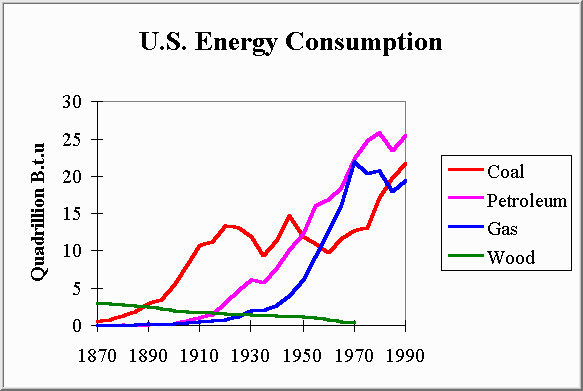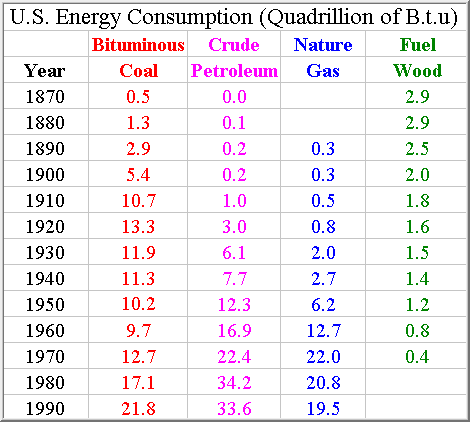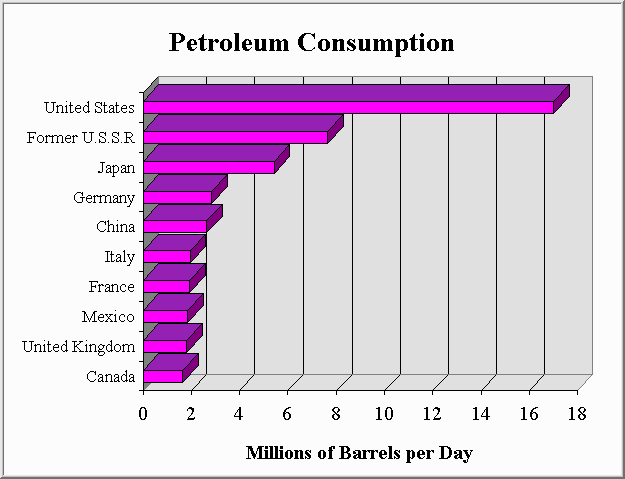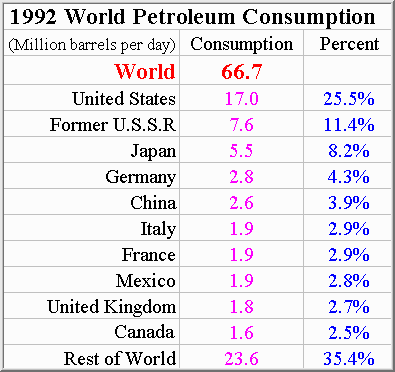![]()
At the birth of our Nation (1776) energy was used primarily to heat houses and cook food; requiring only timber and coal. Water power was sufficient for the textile factories and grain mills that existed, while animal power helped till the fields and provide transportation. However, as the Industrial Revolution (18th Century to today) rolled along, larger quantities of mechanical energy were soon required. Several inventions helped meet these needs, but in the process they also consumed vast quantities of fossil fuels.
"Enough already...go to the bottom."
![]() Steam Engines: Developed by the likes of Savery, Newcomen, and Watt;
steam engines burned coal to supply energy for locomotives, paddleboats,
and factories.
Steam Engines: Developed by the likes of Savery, Newcomen, and Watt;
steam engines burned coal to supply energy for locomotives, paddleboats,
and factories.
![]() Gasoline Engines: With the invention of the internal combustion
engine, and the advent of gasoline automobiles in 1885 by Karl
Benz, petroleum soon became a sought after energy source.
Gasoline Engines: With the invention of the internal combustion
engine, and the advent of gasoline automobiles in 1885 by Karl
Benz, petroleum soon became a sought after energy source.
![]() Electricity: With the perfection of the electric light in 1879,
Thomas Edison had enlightened the world. However, he had also invented
a new energy consuming device. Because of the failings of nuclear power
to gain widespread acceptance, electricity generation continues to
consume vast amounts of coal.
Electricity: With the perfection of the electric light in 1879,
Thomas Edison had enlightened the world. However, he had also invented
a new energy consuming device. Because of the failings of nuclear power
to gain widespread acceptance, electricity generation continues to
consume vast amounts of coal.
The modern American household is packed full of energy consuming devices all designed to make life a little easier. Central heating, air conditioners, fans, electric lights, ovens, microwave ovens, hot water heaters, washing machines, dryers, dish washers, refrigerators, freezers, television sets, computers, and who can forget the automobile; when used cumulatively consume huge amounts of energy. Despite having only about 5% of the worlds population, modern convenience has caused the United States to consume 30% of the world's energy. The non-renewable fuels used to supply this energy hungry lifestyle are shown below.

Figure 5-1, Source: "US Bureau of the Census, Historical Statistics from Colonial Times to 1970."

Figure 5-2, Source: "US Bureau of the Census, Historical Statistics from Colonial Times to 1970."
Petroleum is so important to our society that it has rightfully earned the title "black gold." When used to supply energy, petroleum is converted into; gasoline, fuel oils, lubricants, kerosene, and jet fuels. However, it is also necessary for; plastics, waxes, asphalt, and all nature of fine organic chemicals. Because of its value as a raw material, some claim that petroleum is to valuable to burn! About half of all American chemical engineers are employed by the petroleum industry; and a huge industry it is (see below). The petroleum industry is one of the main reasons chemical engineers have enjoyed such success.

Figure 5-3, Source: "US Bureau of the Census, Historical Statistics from Colonial Times to 1970."

Figure 5-4, Source: "US Bureau of the Census, Historical Statistics from Colonial Times to 1970."
"The end already...go back to the top."
We always welcome COMMENTS, SUGGESTIONS, OR REACTIONS.
Last updated on 4/4/98 by Wayne Pafko...